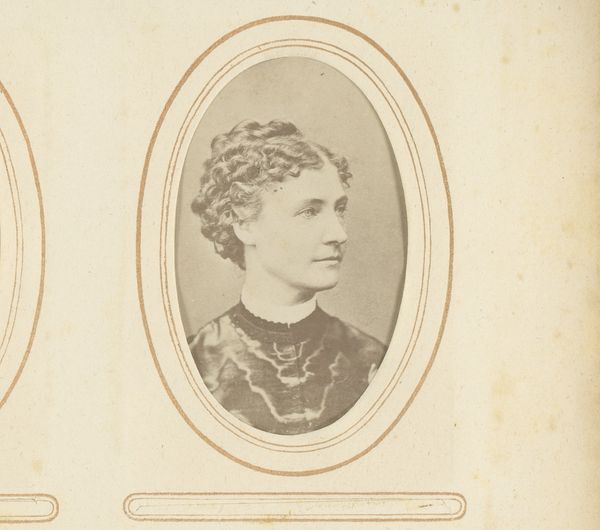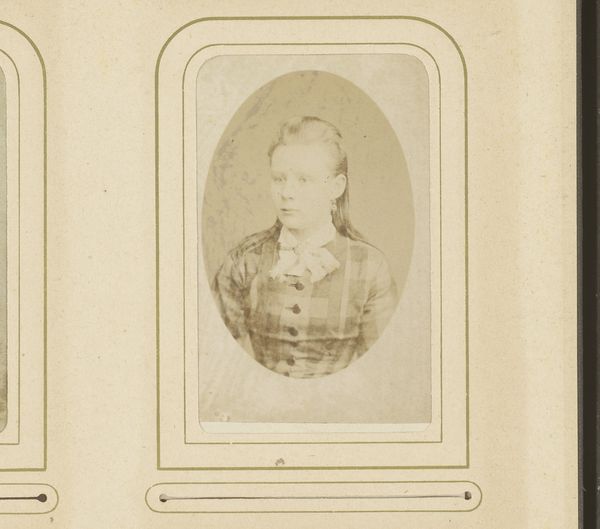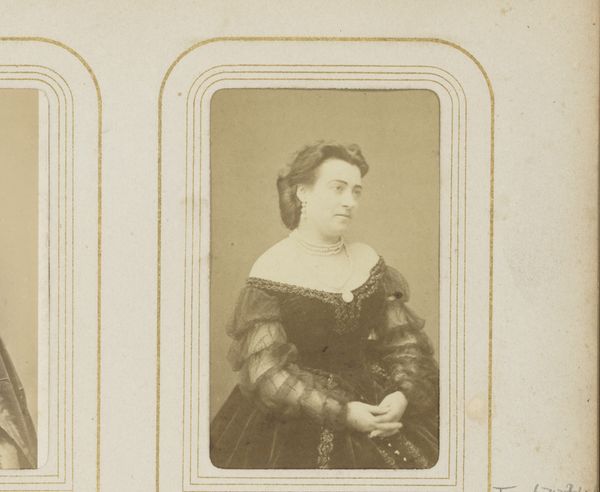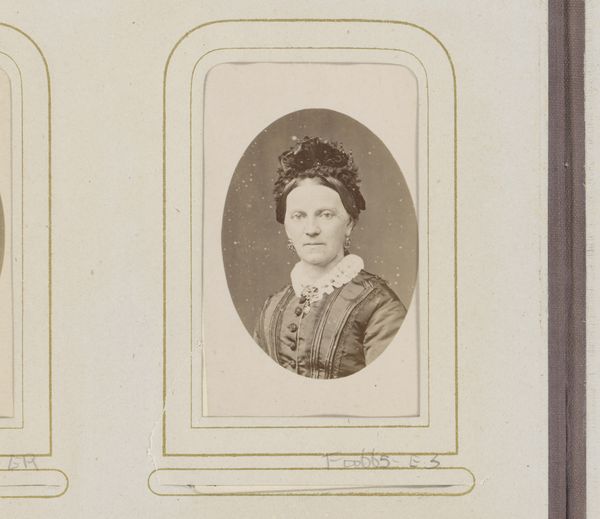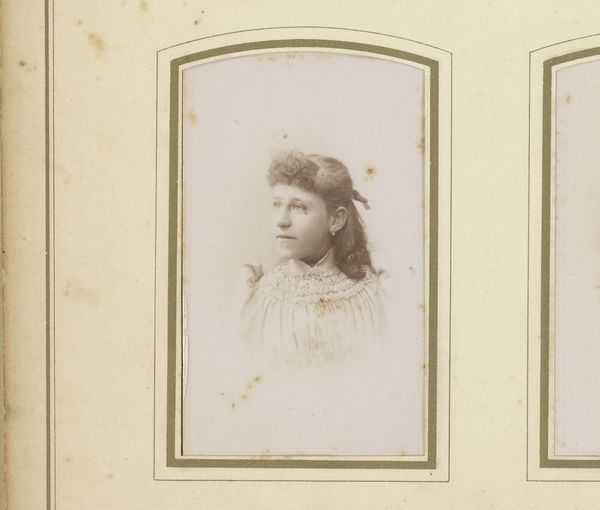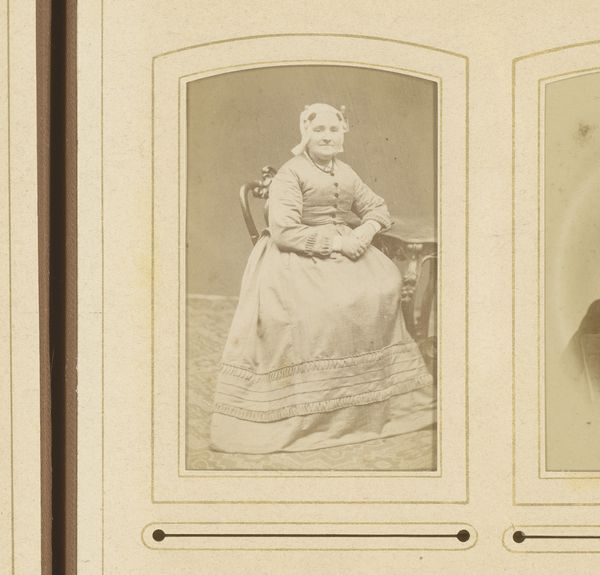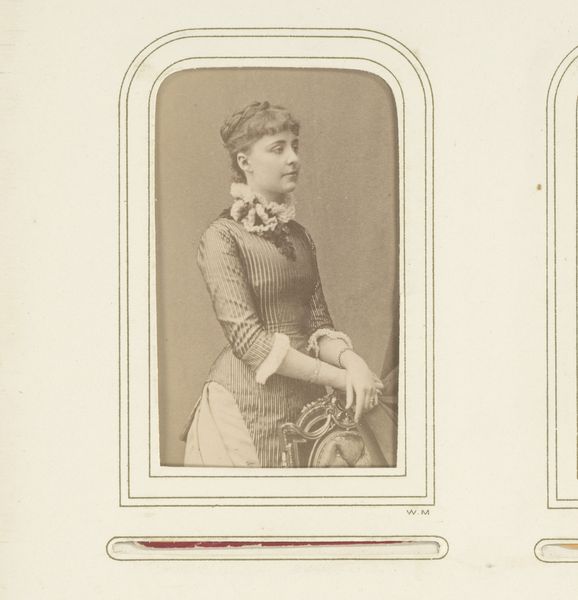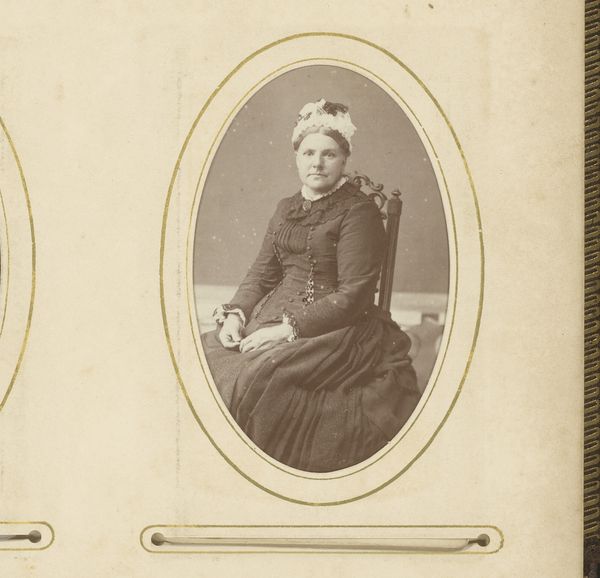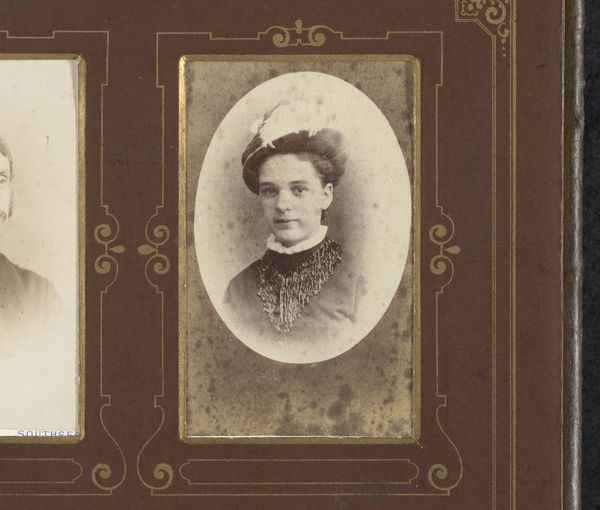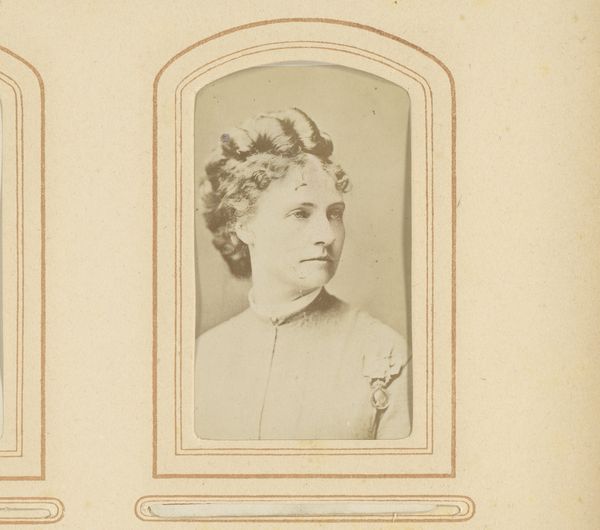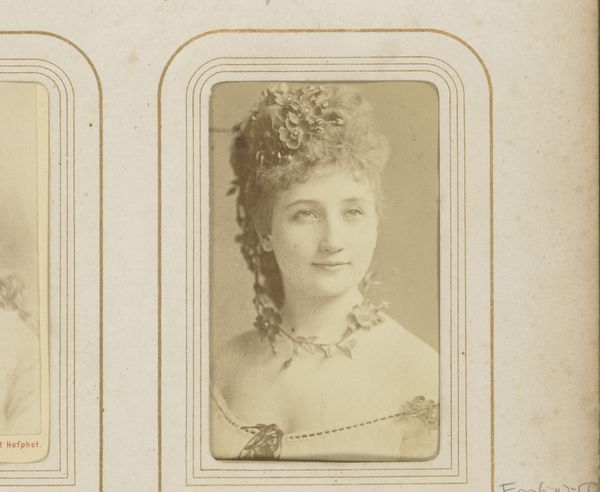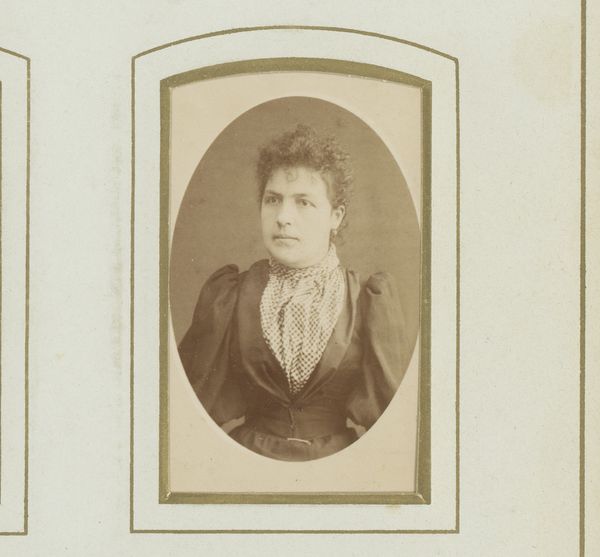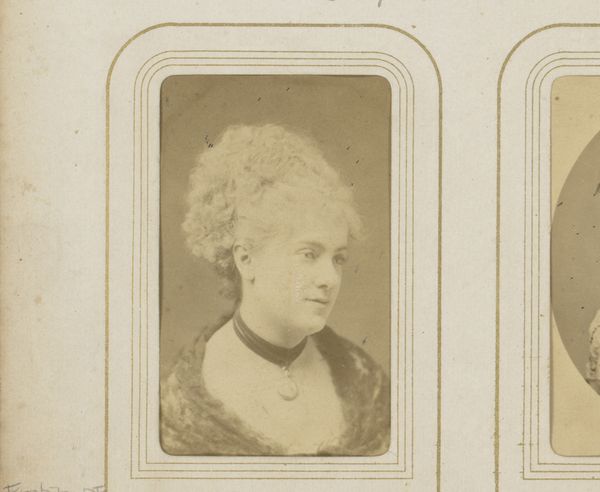
photography, gelatin-silver-print
#
portrait
#
photography
#
historical photography
#
gelatin-silver-print
#
19th century
Dimensions: height 84 mm, width 51 mm
Copyright: Rijks Museum: Open Domain
Anatole Pougnet captured this woman's visage in a photograph, a testament to the era's fascination with preserving likeness. Note the lace collar secured with a bow, a recurring motif throughout art history. From the modest coverings of the Renaissance to the elaborate ruffs of the Elizabethan era, the neck has been a site of adornment and concealment. Recall the "Venus Pudica," where the hand shields the breast—a gesture of modesty. Here, the lace, while ostensibly decorative, veils the neck, creating a similar psychological effect, hinting at a tension between exposure and concealment. The bow, too, is laden with meaning. Initially a mere fastener, it evolves into a symbol of courtship, marriage, and social status. Think of Rococo paintings where bows adorn dresses, symbols of flirtation. This photograph captures a fleeting moment, yet through the language of dress, it speaks of enduring human desires. This dance between revelation and concealment, is something that engages us on a deep, subconscious level. As a symbol, the bow continues to resurface and evolve, reminding us of the cyclical nature of fashion.
Comments
No comments
Be the first to comment and join the conversation on the ultimate creative platform.
